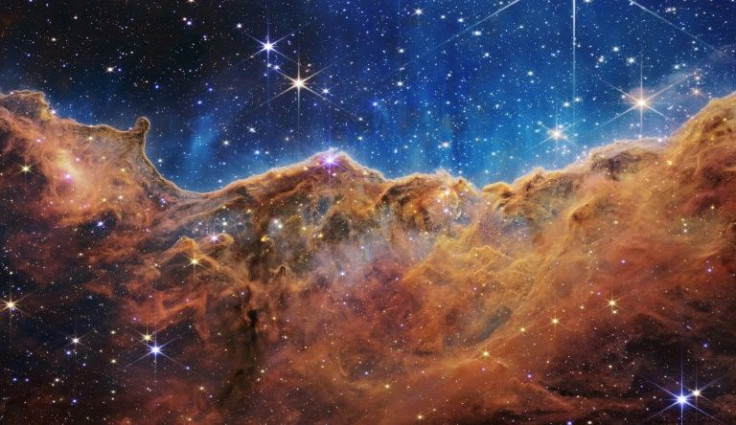NASA Translates Stunning James Webb Photos To Enchanting Music [Listen]
KEY POINTS
- NASA released the sonification of the James Webb Space Telescope's first images
- It is a new way for people to enjoy the stunning images
- It's also a part of the efforts to make astronomy more accessible for everyone
NASA has shared a way for people to enjoy the James Webb Space Telescope's (Webb) first photos in a different way. One can now listen to their enchanting, though slightly eerie, sounds.
People around the world were stunned by Webb's first photos, but now they can listen to them, too. The agency shared Wednesday the sonification of the spectacular photos that were released in July.
"Music taps into our emotional centers," Matt Russo, a musician and physics professor at the University of Toronto, said in the NASA news release. "Our goal is to make Webb's images and data understandable through sound — helping listeners create their own mental images."
One of the Webb images that truly caught people's attention was that of the Carina Nebula, which showed its magnificent "cosmic cliffs." The translated version of the image into sound is just as stunning, with the resulting music sounding rather enchanting.
Hear that? 🎧
— NASA (@NASA) August 31, 2022
These soothing sounds depict the "Cosmic Cliffs" of the Carina Nebula. By translating data to sound, we can experience @NASAWebb's data in a new way. Also explore views of the Southern Ring Nebula and "hear" exoplanet WASP-96 b's atmosphere: https://t.co/wAk1eGKkpI pic.twitter.com/jkV0oDjFY9
As the agency explained, these aren't actual sounds recorded in space. Instead, the music was created by assigning "unique notes" to various regions.
NASA also shared the sound of the Southern Ring Nebula. The sonification covered both the near-infrared light and mid-infrared light versions of the image taken by Webb. It, too, is rather enchanting, albeit a little eerie.
In the near-infrared sonification on the left side, one can clearly hear a distinct sound at the 15-second mark, representing the single star detected in the middle, NASA noted. In the sonification of the mid-infrared image, however, two notes can be heard at the 44-second mark, indicating the detection of two stars instead.
As the agency explained, two stars are actually orbiting each other at the center of the nebula, with the smaller star already being "at the end of its lifetime."
Only recently, NASA also shared the terrifying sounds of a black hole. According to the agency, such sonifications are made to support listeners who are "blind and low-vision," but anyone can really tune in and enjoy the sounds.
"These compositions provide a different way to experience the detailed information in Webb's first data," Quyen Hart of the Space Telescope Science Institute in Maryland, who was involved in the project, said in the news release. "Our teams are committed to ensuring astronomy is accessible to all."
"Overall, the team hopes that sonifications of Webb's data help more listeners feel a stronger connection to the universe — and inspire everyone to follow the observatory's upcoming astronomical discoveries," NASA said.

© Copyright IBTimes 2025. All rights reserved.






















